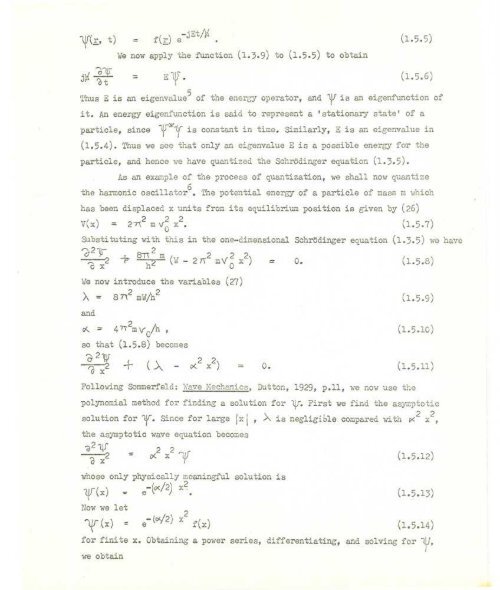introduction-weak-interaction-volume-one
introduction-weak-interaction-volume-one
introduction-weak-interaction-volume-one
You also want an ePaper? Increase the reach of your titles
YUMPU automatically turns print PDFs into web optimized ePapers that Google loves.
(r~ t)<br />
_ f(r) ejEtm<br />
(1 .5 .5 )<br />
We now apply the function (1 .3.9) to (1 .5 .5) to obtai n<br />
-Tt- '<br />
E T - (1 .5 .6 )<br />
Thus E is an eigenvalue5 of the energy operator, and 1)1 is an eigenfunction of<br />
it .<br />
An energy eigenfunction is said to represent a 'stationary state' of a<br />
particle, since is constant in time . Similarly, E is an eigenvalue i n<br />
► ^`r<br />
(1 .5 .4) . Thus we see that only an eigenvalue E is a possible energy for the<br />
particle, and hence we have quantized the SchrNdinger equation (1 .3.5) .<br />
As an example of the process of quantization, we<br />
shall now quantize<br />
the harmonic oscillator6. The potential energy of a particle of mass m which<br />
has been displaced x units from its equilibrium position is given by (26 )<br />
V(x) = 271 2 m v.02 x2 . (1 .5 .7 )<br />
Substituting with this in the <strong>one</strong>-dimensional SchrNdinger equation (1 .3 .5) we hav e<br />
r, U -2 + m (W - 2 7T 2 my 2 x2 ) O . 1 .5<br />
x n d 0 (<br />
.8<br />
)<br />
We now introduce the variables (27 )<br />
X = 8 712 mW/h2<br />
and<br />
oC = 4 7T 2m v0 /h ,<br />
so that (1 .5 .8) become s<br />
2<br />
2 + (\ - c 2 x 2 ) 0 .<br />
~ x<br />
(1 .5 .9 )<br />
(1 .5 .10 )<br />
(1 .5 .11 )<br />
Following Sommerfeld : Wave,:echanics, Dutton, 1929, p .11, we now use th e<br />
polynomial method for finding a solution for 1V. First we find the asymptoti c<br />
solution for 1f1 . Since for large 4x 4 , )\ is regligiLle compared with p2 x 2 ,<br />
the asymptotic wave equation becomes<br />
2 2 x2<br />
a x<br />
whose only physically meaningful solution i s<br />
2r(x) = e -('x/2) x<br />
Now we let<br />
(1 .5 .12 )<br />
(1 .5 .13)<br />
( x ) = e(02) x2 f (x) (1 .5 .14 )<br />
for finite x . Obtaining a power series, differentiating, and solving for ,<br />
we obtain 1



